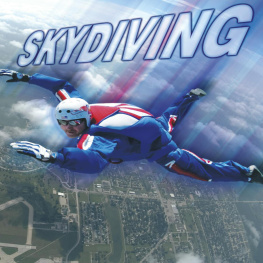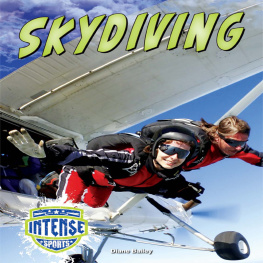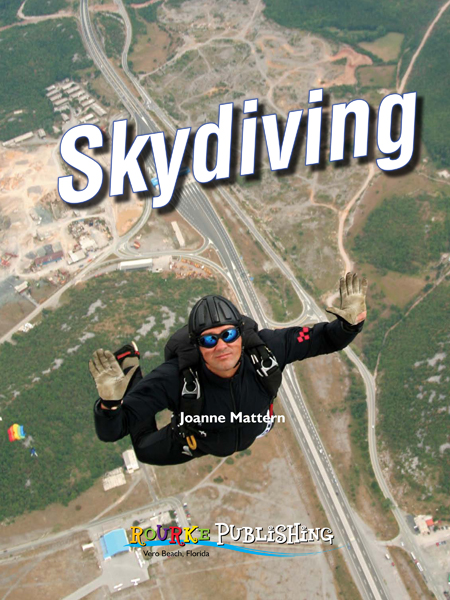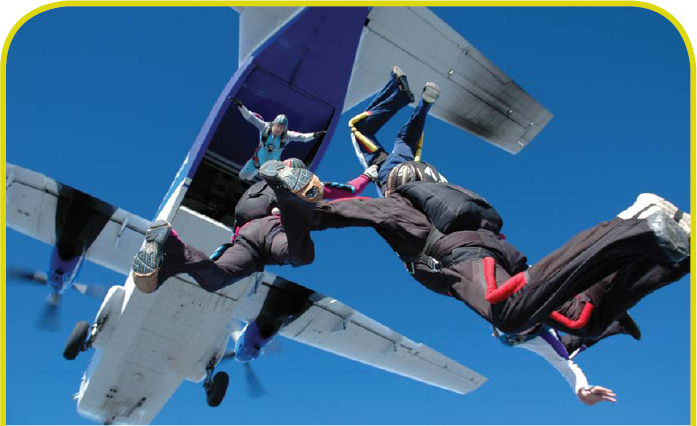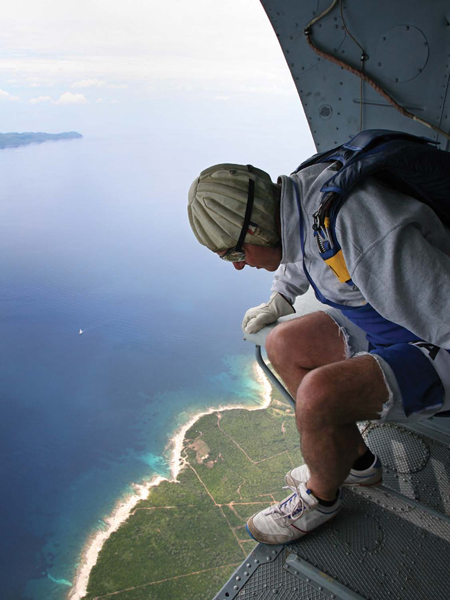Have you ever dived into a pool? Some people like to dive into the air! to slow them down. Skydiving is an exciting sport!
Skydivings Early Days
Skydiving started long before airplanes were invented. People used parachutes to jump from tall buildings hundreds of years ago. In 1797, a Frenchman named Andre-Jacques Garnerin used a parachute to jump out of a hot-air balloon. He jumped about 2,000 feet (610 meters) to the ground.
DID YOU KNOW?
Leonardo da Vinci was an Italian painter and inventor. Way back in 1483, he sketched a cloth parachute in his notebook. Da Vinci thought people could use this parachute to escape from burning buildings.
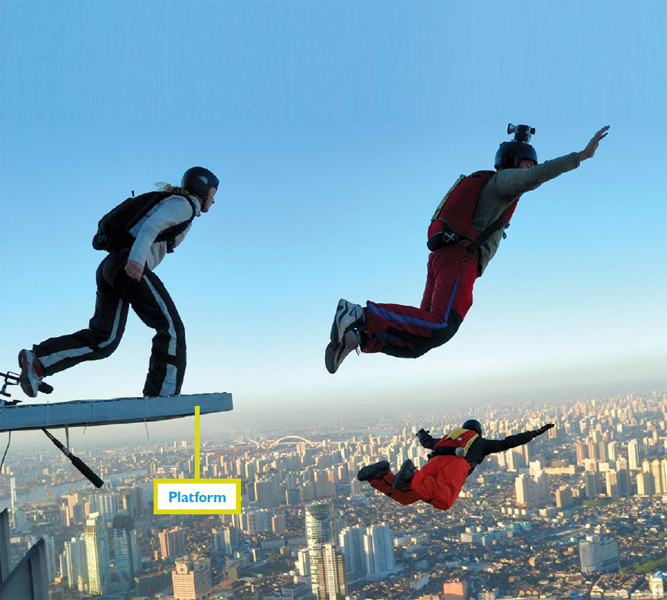
Platform
The first parachute jump from an airplane was made in 1912. In 1914, Georgia Tiny Broadwick became the first woman to jump out of an airplane.
Early skydivers used parachutes attached to the plane. Then they cut the ropes to fall from the plane. In 1919, Leslie Irvin tested a new kind of parachute. This parachute had a . He jumped out of a plane and pulled the ripcord after a few seconds. Many people call Irvin the inventor of skydiving.
DID YOU KNOW?
Until Leslie Irvin did it, people did not think it was possible to jump with a parachute that was not attached to a plane. They thought the skydiver would faint before he or she could pull the ripcord.
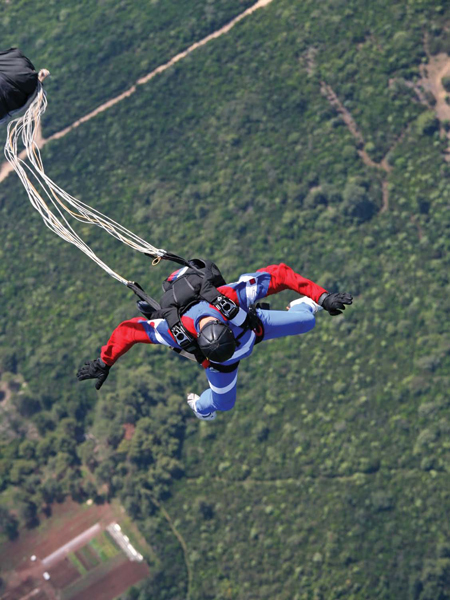
Equipment
Skydivers use several different pieces of equipment when they jump. The most important piece is the parachute. Skydivers have two parachutes. One is called the main parachute. The other is the reserve parachute. Skydivers use the reserve parachute if the main parachute does not work.
Skydivers also need an . An altimeter tells skydivers how high they are in the sky. When the skydiver gets to a certain height, its time to pull the ripcord and release the parachute.
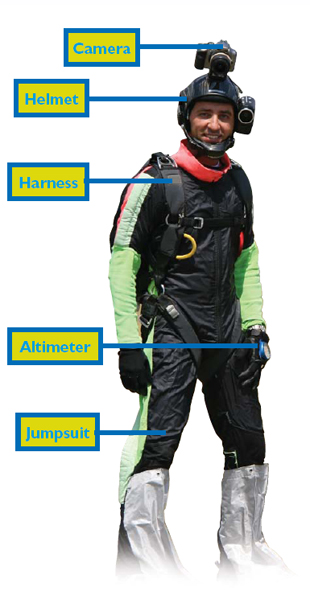
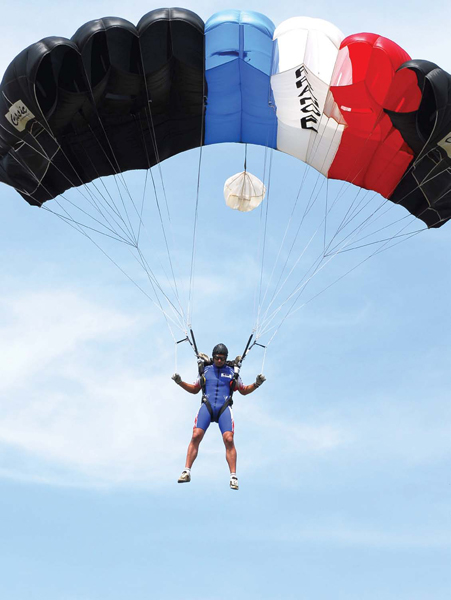
DID YOU KNOW?
Parachutes come in different shapes and sizes, depending on what type of skydiving they are used for.
Skydivers wear holds the parachutes to the body.
Skydivers also wear helmets and . A helmet protects the skydivers head. Its important to stay safe, both in the air and during landing.
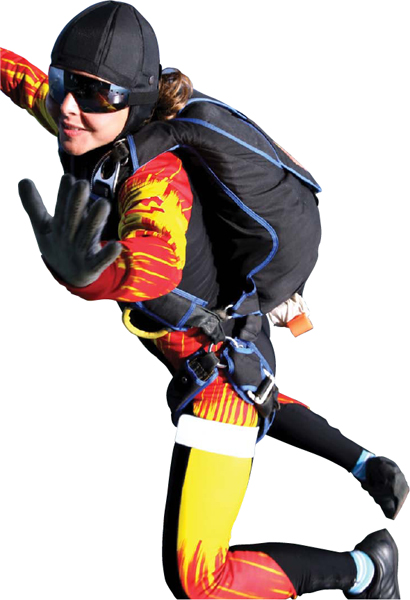
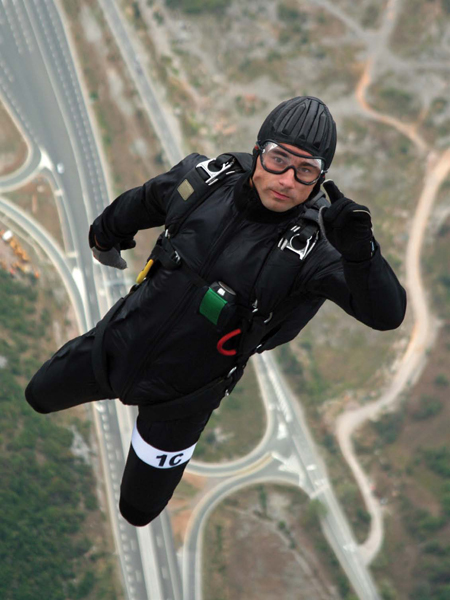
SHIELDS AND GOGGLES
Skydivers wear goggles or helmets that have face shields. Goggles and shields protect the skydivers face. They also keep wind and dust out of the skydivers eyes.
Learning to Dive
Skydivers must take training classes before they take to the sky. During these classes, they learn how to use their equipment. They learn all the safety rules.
Next, skydivers do ground training. They jump off of low towers. They learn how to hold and move their bodies in the air. They also learn how to land safely.
Finally, it is time to go up in the air. Usually, a or with an instructor. The instructor helps the skydiver do everything right. Later, the skydiver can jump all alone.
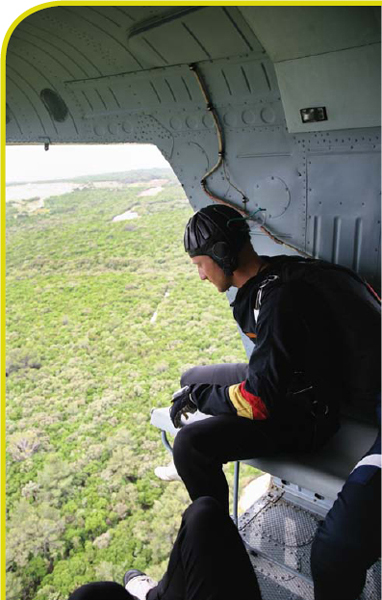
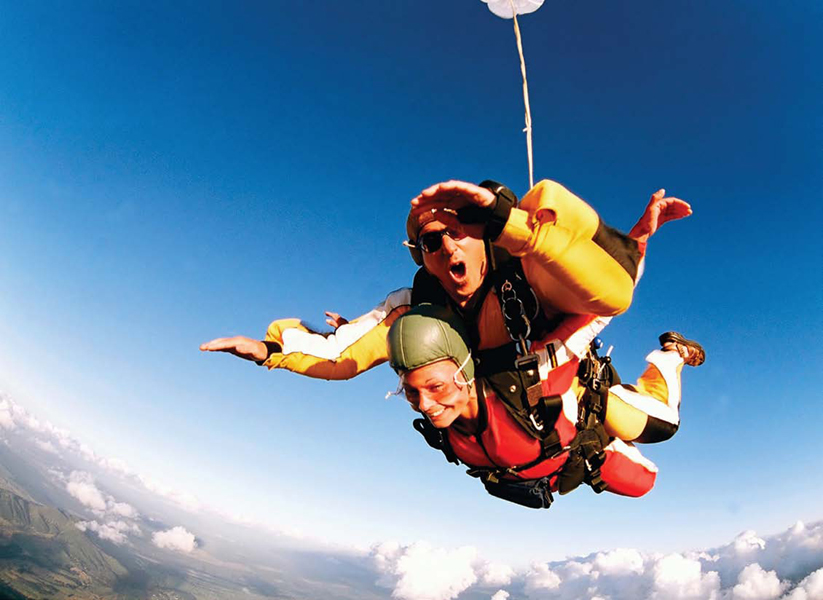
DID YOU KNOW?
Some novices start with a static line jump. A metal rope holds the parachute to the airplane. The line opens the parachute when the skydiver jumps.
Steering and Turning
The parachute is not just something to help the skydiver land. It also helps the skydiver fly! A skydiver steers a parachute by pulling on control lines. These lines turn the parachute left or right.
Some skydivers use their parachutes for target practice. They try to land in a certain spot on a field. It takes careful steering and turning to land on the right spot!
In some , the landing target is a tiny disc just over one inch (2.54 centimeters) across!
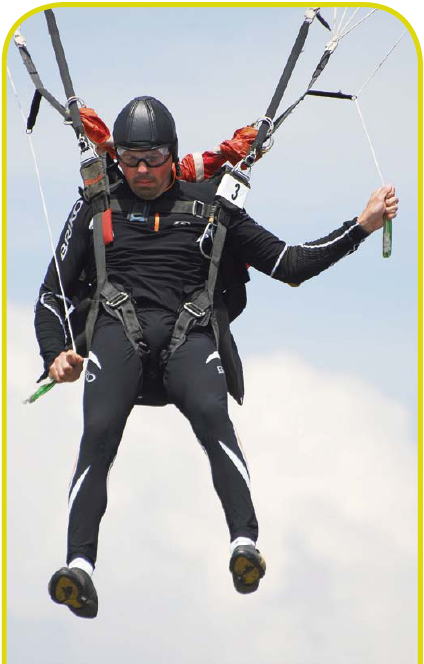
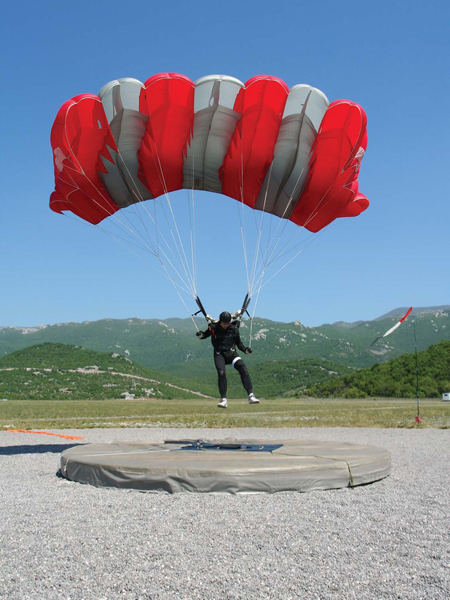
In competition, skydivers earn points for landing on the target.
Skysurfing and Freestyling
Some skydivers have taken this sport to an even more exciting level. These skydivers actually surf in the air. A attaches a board to his or her feet. The skydiver uses the board to surf in the air, just like a surfer uses a surfboard to ride the waves.
The first standing skysurf was performed by French skydiver Joel Cruciani in 1987. He used a regular surfboard with snowboard foot bindings.
moves during free fall. Freestyle teams have at least two members. One member does the moves. The other member films the skydiver using a helmet-mounted camera.

